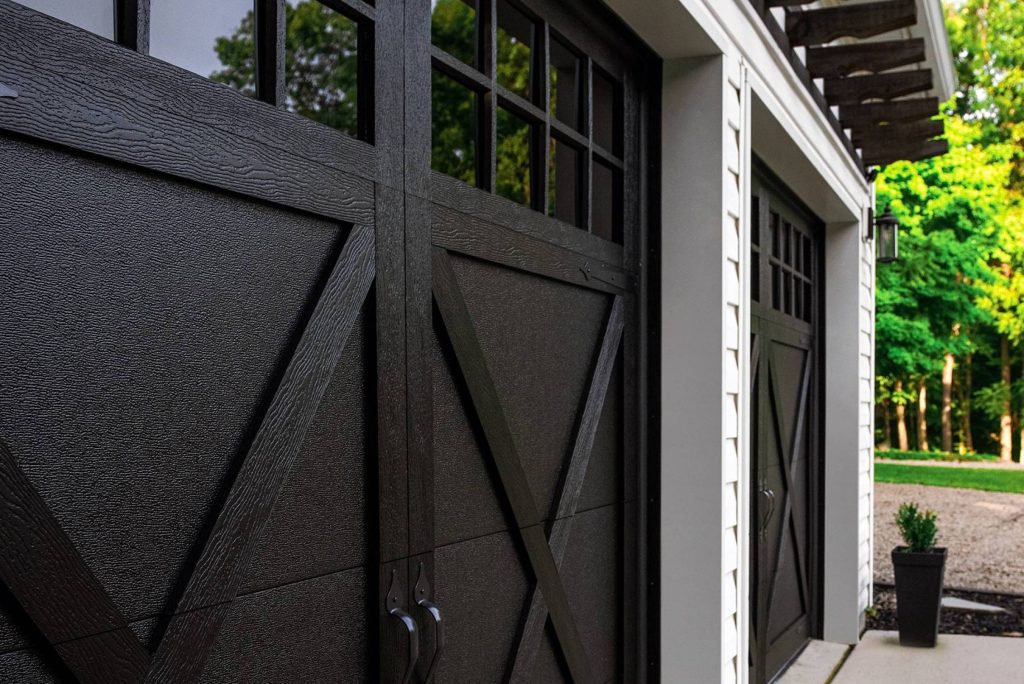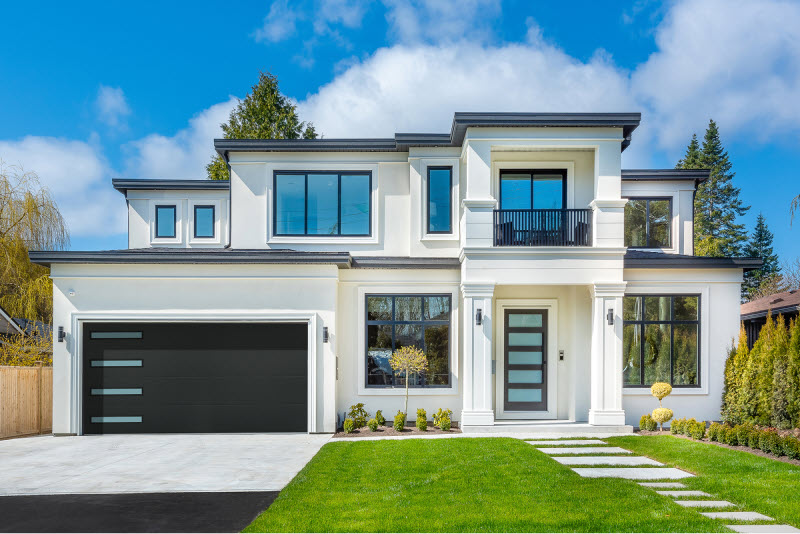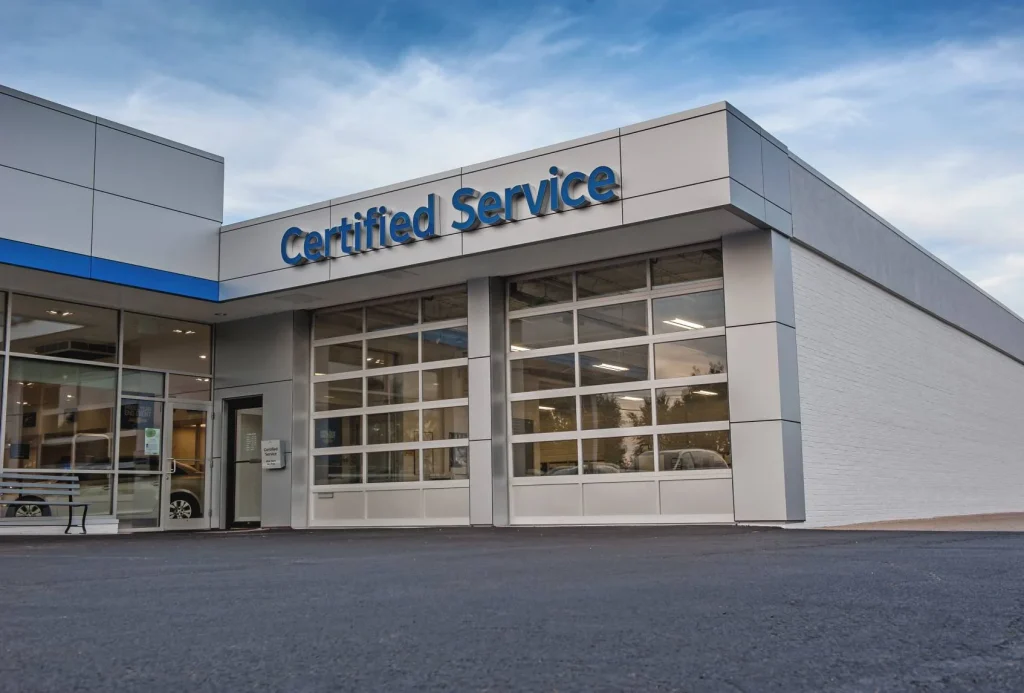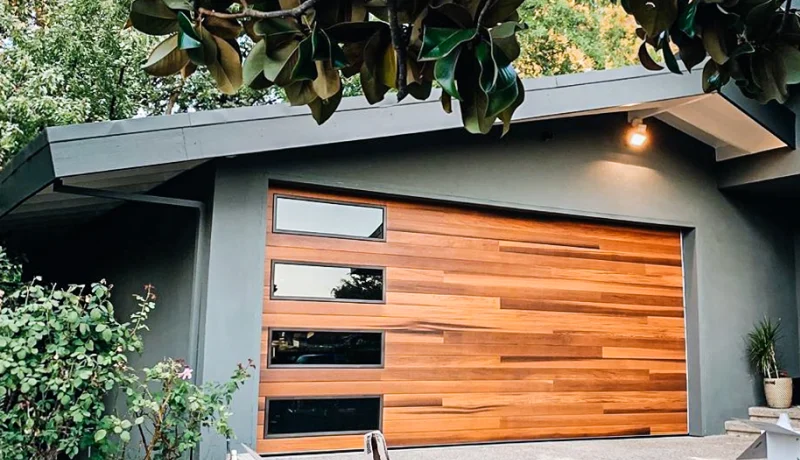Garage Door Prices in Sterling Heights, MI
Affordable Options for Every Budget
Locally Based, Regionally Trusted
Since 2017
Schedule A Service Request
We Serve Businesses In And Around The Following Cities:
About Garage Door Prices
Garage Door Prices for Commercial Properties in Sterling Heights
Understanding the Importance of Garage Doors for Commercial Spaces
In the bustling city of Sterling Heights, the commercial landscape is as diverse as it is vibrant. Businesses are continually seeking ways to improve efficiency, enhance customer experiences, and maintain secure operations. One often overlooked yet crucial element in achieving these objectives is the installation and maintenance of quality garage doors. Though commonly associated with residential properties, garage doors in commercial settings play a vital role in the daily operations of many businesses, from automotive service centers to retail warehouses. Recognizing the nuances in garage door prices and understanding the long-term benefits of investing in the right equipment can significantly impact a company’s bottom line.
The process of selecting the perfect garage door requires a balance of aesthetics, functionality, and cost. For many business owners, understanding garage door prices and how they vary based on specific needs is not only useful but essential. This guide explores these variables, offering a comprehensive look at the factors influencing garage door prices and how savvy decisions can contribute to enhanced productivity and security in commercial properties.
Factors Influencing Garage Door Prices in Sterling Heights
The price of garage doors for commercial spaces in Sterling Heights is influenced by several factors, chief among them being the material selection, design complexity, and the integration of advanced technology. Choosing the right material is a foundational decision. Options, which range from steel and aluminum to wood and composite materials, each offer unique benefits. Steel doors, for instance, are prized for their durability and strength, making them ideal for high-traffic areas requiring robust security. Aluminum doors are lightweight, reducing the wear on opening mechanisms and are often favored in environments where appearance and ease of operation are critical.
The design and customization of garage doors also play a pivotal role in determining costs. While traditional designs may cater sufficiently to certain businesses, others may necessitate bespoke solutions that reflect their brand identity or operational needs. This customization inevitably impacts garage door prices. Additionally, the incorporation of modern technologies, such as automated systems or energy-efficient features, can add to initial costs but offer considerable savings and enhancements in functionality over time.
The Benefits of Investing in Quality Garage Doors
When businesses weigh garage door prices, it's essential to factor in the myriad benefits that quality installations provide. Beyond mere access control, contemporary garage doors offer improved security features, such as advanced locking systems and robust construction, which deter potential break-ins and safeguard valuable property. Moreover, these installations can bolster a company’s public image, presenting a polished, professional front to clients and partners alike.
Efficiency is another significant advantage. Modern garage doors often come equipped with high-performance openers that streamline operations and reduce downtime. The installation of a reliable garage door opener ensures seamless entry and exit, which is particularly crucial for businesses with heavy reliance on logistics and vehicular movement. Cost considerations within Sterling Heights often include the garage door opener installation price, reflecting the convenience and operational enhancements these systems provide.
Furthermore, the thermal efficiency of garage doors can impact a business's ongoing utility costs. Insulated doors maintain stable indoor temperatures, reducing the demand on heating and cooling systems and resulting in lower energy expenses. This can be an attractive benefit for businesses looking to implement sustainable practices while savoring long-term financial savings.
Real-World Applications and Case Studies
In Sterling Heights, numerous businesses have reaped the rewards of investing in high-quality garage doors. Take, for instance, a local distribution warehouse that recently upgraded its garage doors to incorporate automated opening systems. These contemporary garage door prices reflected their specific needs for enhanced speed and efficiency, which translated into quicker loading times, reduced labor costs, and an uptick in overall productivity.
Similarly, an automotive service center in the area opted for steel-reinforced garage doors to prioritize security. While the upfront garage door prices were higher than standard options, the peace of mind in protecting expensive workshop tools and client vehicles proved invaluable. Such examples underscore the importance of aligning a business's specific goals with garage door features, which is precisely where tailored solutions, like those offered by D&J Contracting, come into play.
The Selection Process and Ethical Considerations
Choosing the right garage door involves more than just considering garage doors and prices. Savvy business owners in Sterling Heights understand the importance of evaluating the ethical and environmental impact of their decisions. Local contractors, such as D&J Contracting, emphasize sustainable sourcing of materials and adherence to safety regulations, ensuring that the investments made today do not compromise the welfare of future generations.
Another critical aspect of this decision is the professional installation service. A thoroughly planned and executed installation can dramatically influence the long-term performance of a garage door, minimizing maintenance issues and optimizing safety. Businesses evaluating the garage opener installation price should consider D&J Contracting for their reputation in delivering quality and their commitment to supporting local enterprises.
Installation is a crucial stage where many businesses fail to pay due attention, often leading to operational disruptions or frequent repair costs. Partnering with a trusted contractor ensures a smooth implementation, facilitated by experienced technicians familiar with the specific climatic and operational conditions prevalent in Sterling Heights.
In conclusion, navigating the landscape of garage door prices in Sterling Heights necessitates a thoughtful approach that aligns financial outlay with strategic business objectives. By understanding the factors influencing these costs and recognizing the tangible benefits of investing in quality and tailored solutions, commercial entities can significantly bolster their operational efficiency and security. While the initial investment may vary, the long-term advantages of choosing the right door and provider, such as D&J Contracting, cannot be overstated. As businesses plan for future growth, the consideration of high-quality garage doors proves to be an investment not only in infrastructure but in the overall success and sustainability of their operations in Sterling Heights.
Garage Door Prices Gallery



Call Us Today to receive your Free Quote for Garage Door Prices in Sterling Heights
Serving: Sterling Heights, Michigan

About Sterling Heights, Michigan
As a result of the War of 1812 and the 1817 Treaty of Fort Meigs, the area of the Michigan Territory which now makes up Sterling Heights was first surveyed by Deputy Surveyor Joseph Wampler; his survey was approved on February 20, 1818. Wampler had been one of two deputy surveyors of Perrysburg, Ohio, in 1816.
Originally created as part of Shelby Township in April 1827, it was broken off as Jefferson Township in March 1835. In March 1838, it was renamed Sterling Township.
Until the 1950s, Sterling Township was an agricultural area, largely devoted to growing rhubarb and other crops sold in Detroit. Road improvements led to decreased commute times and lower costs for the delivery of goods and services to and from businesses. The population increased when suburban homes were built for the workers in metropolitan Detroit's booming automobile industry. When Sterling Township was incorporated as a city in 1968, "Heights" was added to the name to satisfy a state law that prevents incorporated municipalities from having the same name, as there was already a small village named Sterling in Arenac County.
Gerald Donovan became the first mayor of the city and F. James Dunlop became the first mayor pro-tempore. In the 1960s and 1970s, many residents came to live in Sterling Heights to work in automobile plants operated by Chrysler and Ford. Lakeside Mall opened in Sterling Heights in 1976.
The city is home to many groups of immigrants. It has received many people of eastern European origins, including ethnic Albanians, Bosnians, Croatians, Macedonians, Montenegrins, Poles, Serbians and Slovenians. After the 2003 U.S.-Iraqi War, millions of Iraqi citizens were displaced, particularly Assyrians, whom the majority of which adhere to the Chaldean Catholic Church. Of these, 30,000-50,000 resettled in Sterling Heights, giving parts of the city the nickname "Little Nineveh", especially around 15 Mile Road and Ryan.
Sterling Heights is a second-ring suburb, 14 to 20 miles (23 to 32 km) north of downtown Detroit. The city's southern border is 6 miles (10 km) from Detroit's northern border. The shape of the city is six miles long and miles wide. It is bordered to the south by the city of Warren, at its southwest corner by Madison Heights, to the west by Troy, to the north by Utica and Shelby Township, at its northeast corner by Macomb Township, to the east by Clinton Township, and to the southeast by Fraser.
According to the U.S. Census Bureau, Sterling Heights has a total area of 36.72 square miles (95.10 km), of which 36.45 square miles (94.41 km) are land and 0.27 square miles (0.70 km), or 0.74%, are water. The Clinton River crosses the northeast part of the city, flowing east to Lake St. Clair east of Mount Clemens.
Sterling Heights features a humid continental climate (Köppen: Dfa). Summers are somewhat hot with temperatures exceeding 90 °F (32 °C) on average 8.6 days. Winters are cold, with temperatures not rising above freezing on 39.1 days annually, while dropping to or below 0 °F (−18 °C) on average 1.2 days a year.
Sterling Heights sits on two main thoroughfares:
 M-53 commonly called Van Dyke Avenue or the Van Dyke Freeway (they split in the city, however, and rejoin to its north), which leads north into The Thumb of Michigan.
M-53 commonly called Van Dyke Avenue or the Van Dyke Freeway (they split in the city, however, and rejoin to its north), which leads north into The Thumb of Michigan. M-59, commonly called Hall Road once the freeway ends—which is the east–west connector from just north of Mount Clemens, through Utica as a surface road, and then becomes a limited access freeway to Pontiac, being the main northern connector between Macomb County and Oakland County. In Sterling Heights, large areas are devoted to retail and commercial development (e.g., Lakeside Mall).
M-59, commonly called Hall Road once the freeway ends—which is the east–west connector from just north of Mount Clemens, through Utica as a surface road, and then becomes a limited access freeway to Pontiac, being the main northern connector between Macomb County and Oakland County. In Sterling Heights, large areas are devoted to retail and commercial development (e.g., Lakeside Mall).
- Mound Road is an important north–south artery that runs continuously through the city. Overall, the road starts south in Hamtramck and runs up to 32 Mile Road in Romeo. The road ends briefly at River Bends Park in Shelby Township (becoming Auburn Road), and continues just north of 22 Mile Road.
- East-west travel is mainly on the "mile roads," beginning at 14 Mile Road through 20 Mile Road (M-59). 16 Mile Road, also known as Metro Parkway, is another major "mile road". See Roads and freeways in metropolitan Detroit.
- Utica Road is an important diagonal connector that crisscrosses the city from southeast to northwest, going through the intersection of Dodge Park Road (across from the Sterling Heights city hall) via the first roundabout in Macomb County.
- Dequindre Road is the border between the city of Sterling Heights and the city of Troy. It is also the border between the counties of Macomb and Oakland.
- Hayes Road is the divider between Clinton Township (Between Utica Road and South of M59) and Fraser (Between Masonic and Moravian).
| Census | Pop. | Note | %± |
|---|---|---|---|
| 1940 | 3,648 | — | |
| 1950 | 6,509 | 78.4% | |
| 1960 | 14,622 | 124.6% | |
| 1970 | 61,365 | 319.7% | |
| 1980 | 108,999 | 77.6% | |
| 1990 | 117,810 | 8.1% | |
| 2000 | 124,471 | 5.7% | |
| 2010 | 129,699 | 4.2% | |
| 2020 | 134,346 | 3.6% | |
| U.S. Decennial Census 2018 Estimate | |||
| Race / Ethnicity (NH = Non-Hispanic) | Pop 2000 | Pop 2010 | Pop 2020 | % 2000 | % 2010 | % 2020 |
|---|---|---|---|---|---|---|
| White alone (NH) | 111,743 | 108,750 | 106,149 | 89.77% | 83.85% | 79.01% |
| Black or African American alone (NH) | 1,602 | 6,638 | 8,709 | 1.29% | 5.12% | 6.48% |
| Native American or Alaska Native alone (NH) | 239 | 246 | 200 | 0.19% | 0.19% | 0.15% |
| Asian alone (NH) | 6,100 | 8,713 | 10,935 | 4.90% | 6.72% | 8.14% |
| Native Hawaiian or Pacific Islander alone (NH) | 35 | 16 | 13 | 0.03% | 0.01% | 0.01% |
| Other race alone (NH) | 122 | 158 | 337 | 0.10% | 0.12% | 0.25% |
| Mixed race or Multiracial (NH) | 2,965 | 2,655 | 4,728 | 2.38% | 2.05% | 3.52% |
| Hispanic or Latino (any race) | 1,665 | 2,523 | 3,275 | 1.34% | 1.95% | 2.44% |
| Total | 124,471 | 129,699 | 134,346 | 100.00% | 100.00% | 100.00% |
As of the census of 2010, there were 129,699 people, 49,451 households, and 34,515 families living in the city. The population density was 3,552.4 inhabitants per square mile (1,371.6/km). There were 52,190 housing units at an average density of 1,429.5 per square mile (551.9/km). The racial makeup of the city was 85.1% White, 5.2% African American, 0.2% Native American, 6.7% Asian, 0.5% from other races, and 2.2% from two or more races; 1.9% of the population were Hispanic or Latino of any race were.
There were 49,451 households, of which 31.0% had children under the age of 18 living with them, 55.0% were married couples living together, 10.5% had a female householder with no husband present, 4.3% had a male householder with no wife present, and 30.2% were non-families. 26.5% of all households were made up of individuals, and 10.7% had someone living alone who was 65 years of age or older. The average household size was 2.61 and the average family size was 3.20.
The median age in the city was 40.4 years. 21.7% of residents were under the age of 18; 8.8% were between the ages of 18 and 24; 25.8% were from 25 to 44; 28.6% were from 45 to 64; and 15.2% were 65 years of age or older. The gender makeup of the city was 48.5% male and 51.5% female.
As of the census of 2000, there were 124,471 people, 46,319 households, and 33,395 families living in the city. The population density was 3,397.0 inhabitants per square mile (1,311.6/km). There were 47,547 housing units at an average density of 1,297.6 per square mile (501.0/km). The racial makeup of the city was 90.70% White, 1.30% African American, 0.21% Native American, 4.92% Asian, 0.04% Pacific Islander, 0.34% from other races, and 2.50% from two or more races; 1.34% of the population were Hispanic or Latino of any race.
Ancestries: Polish (19.0%), German (14.4%), Italian (12.5%), Macedonian (5.7%), English (5%), Chaldo-Assyrians (20.7%), American/US (4%) ,and Irish (4%).
In 2000, there were more people in Sterling Heights born in Iraq than any other foreign country. In that year there were 5,059 people in Sterling Heights born in Iraq. The next three largest nations of foreign birth were North Macedonia at 1,723, Italy at 1,442 and Poland at 1,427.
There were 46,319 households, out of which 32.9% had children under the age of 18 living with them, 60.4% were married couples living together, 8.5% had a female householder with no husband present, and 27.9% were non-families. 24.1% of all households were made up of individuals, and 8.5% had someone living alone who was 65 years of age or older. The average household size was 2.66 and the average family size was 3.21.
In the city, the population was spread out, with 24.1% under the age of 18, 8.5% from 18 to 24, 30.4% from 25 to 44, 25.2% from 45 to 64, and 11.8% who were 65 years of age or older. The median age was 37 years. For every 100 females, there were 96.0 males. For every 100 females age 18 and over, there were 92.6 males.
The median income for a household in the city was $60,494, and the median income for a family was $70,140. Males had a median income of $51,207 versus $31,489 for females. The per capita income for the city was $24,958. About 4.0% of families and 5.2% of the population were below the poverty line, including 6.6% of those under age 18 and 7.5% of those age 65 or over.
Sterling Heights is served by two public school districts: Utica Community Schools, which serves the northern half of the city, and Warren Consolidated Schools, which serves the southern half of the city. Utica operates two high schools in the city, Stevenson High School and Henry Ford II High School, while Warren Consolidated operates Sterling Heights High School. Additionally, Parkway Christian School, a private K-12 Christian school, is also located in the city.
